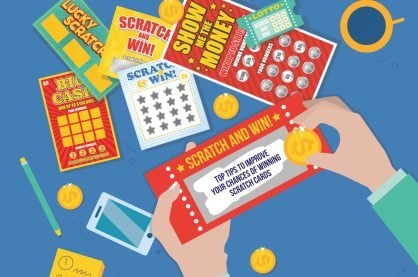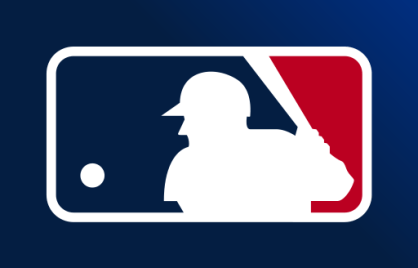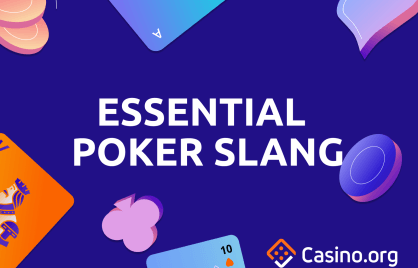Mental Warm-Up Routines for Poker: How to Prime Your Brain Before You Play

Summarize this post
Mental Warm-Up Routines for Poker: What You’ll Learn
- Importance of Mental Preparation: Understand why warming up mentally is crucial for optimal performance in poker and how it can enhance your focus and decision-making.
- Effective Warm-Up Techniques: Explore various mental warm-up routines, including visualization exercises, breathing techniques, and mindfulness practices tailored for poker players.
- Creating Personalized Routines: Learn how to develop a personalized mental warm-up routine that suits your playing style and prepares you for different game scenarios.
- Enhancing Focus and Concentration: Discover strategies to improve your concentration and reduce distractions, helping you stay engaged during long poker sessions.
- Building Confidence and Readiness: Gain insights into ways to boost your confidence and mental readiness before a game, allowing you to approach each session with a winning mindset.
Most poker players are running late before the session even starts.
They log on, fire up a few tables, and dive straight into the action with no prep, plan, or transition from the rest of their day. Just jump in and hope for the best.
And it’s not just online poker players. Live players often fall into the same trap—rushing from dinner straight to the registration desk, plopping down at the table, and playing their first hand without checking in mentally at all.
But here’s the thing: poker isn’t just a game of cards—it’s a game of decisions. And if your brain isn’t ready to think clearly, regulate emotions, and stay focused, you’re already at a disadvantage.
Athletes warm up their bodies before competition. Performers rehearse before they step on stage. Even surgeons take a moment to center themselves before a high-stakes procedure.
Why Don’t We Warm Up For Poker Games?
So why do so many poker players sit down to play with zero mental warm-up?
In this article, I’ll show you exactly how to create a pre-session routine that primes your brain for better performance. You’ll learn what the science says, what the routine should include, and how to tailor it to your goals, whether you’ve got two or ten minutes.
Because when you take a few moments to reset, breathe, and set your intention, you’re not just “getting ready,” you’re laying the foundation for sharper focus, stronger emotional control, and more confident decisions from hand one.
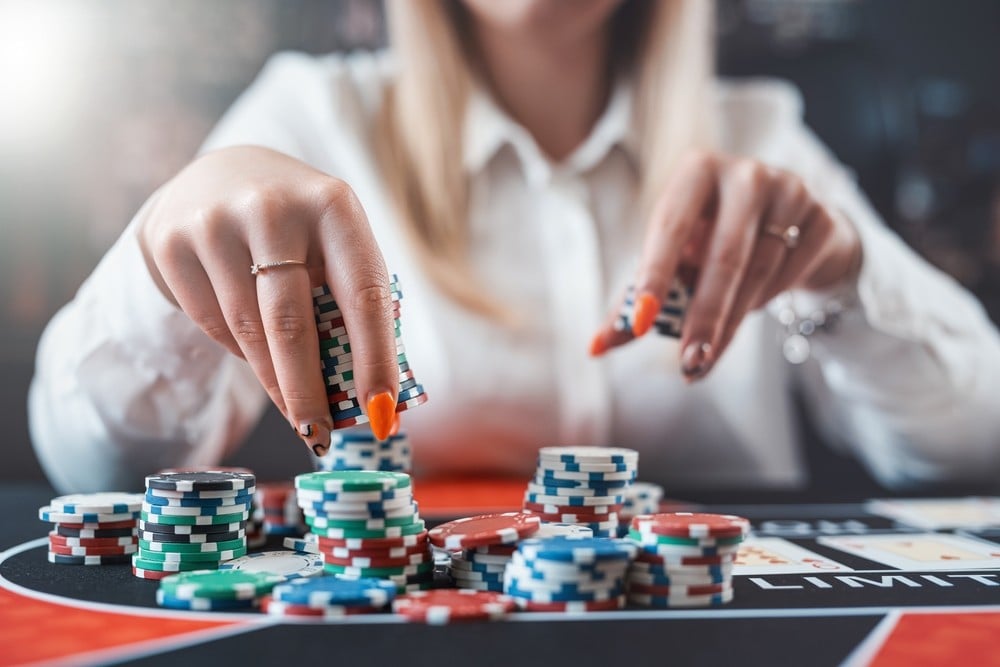
Image Credit: Davizro Photography/Shutterstock
Why Mental Warm-Ups Work: The Psychology Behind the Prep
There’s a reason top performers in every field, from elite athletes to professional musicians to emergency responders, use mental warm-up routines before high-stakes events.
Neuropsychology shows that mental warm-ups help shift your brain from a scattered or reactive mode into a state of focused readiness. And that matters in poker, where every decision is a blend of logic, memory, emotional regulation, and timing.
Let’s break it down.
When you take a few minutes to breathe, set an intention, and mentally rehearse, you’re triggering several psychological benefits:
🔹 Improved Focus and Attention
Poker requires sustained mental effort. A warm-up helps you clear mental clutter and anchor your attention in the present, so you’re not making decisions with half your brain still thinking about that text you just answered or the traffic on the way to the casino.
🔹 Reduced Emotional Reactivity
A short mental reset activates your parasympathetic nervous system (your calm/rest-and-digest mode). This lowers stress hormones and increases your capacity for self-regulation, meaning you’re less likely to snap-tilt after a bad beat or misplay.
🔹 Stronger Working Memory and Pattern Recognition
Warm-ups act as a “mental ignition switch,” helping you access strategic memory faster. It’s like your brain saying, “Ah, yes—we’re playing poker now. Let’s pull up the right files.”
🔹 Grounding in Process, Not Outcome
When you set a goals-based intention (like “I’m here to make good decisions” or “I play my A-game regardless of results”), you protect yourself from outcome-chasing and tilt. You’re anchoring your identity in how you want to show up, not what happens next.
So while it might feel like a warm-up is a luxury or something to skip when you’re short on time, the truth is: a few minutes of prep can dramatically improve the quality of your decisions.
And in a game where every edge matters, that’s not something to leave to chance.
What a Mental Warm-Up Should Include
A good warm-up isn’t about hype or positive vibes—it’s about alignment. You’re aligning your mind, your body, and your intention so you can sit down ready to think clearly, regulate your emotions, and make smart decisions.
Here are the four key components that make up an effective mental warm-up for poker:
1. Centering Your Attention
The goal here is to shift from reactive mode to responsive mode.
Most of us start a session with scattered attention—maybe we were scrolling, rushing, or thinking about something totally unrelated. Taking 1–2 minutes to slow your breathing and connect to the present can make a huge difference.
One simple technique for centering is the 6-2-7 Reset
- Inhale for a count of 6
- Hold for 2
- Exhale slowly out of your mouth for 7
Do one or two rounds while sitting still and upright. This signals your nervous system to settle down and brings you into the here and now.
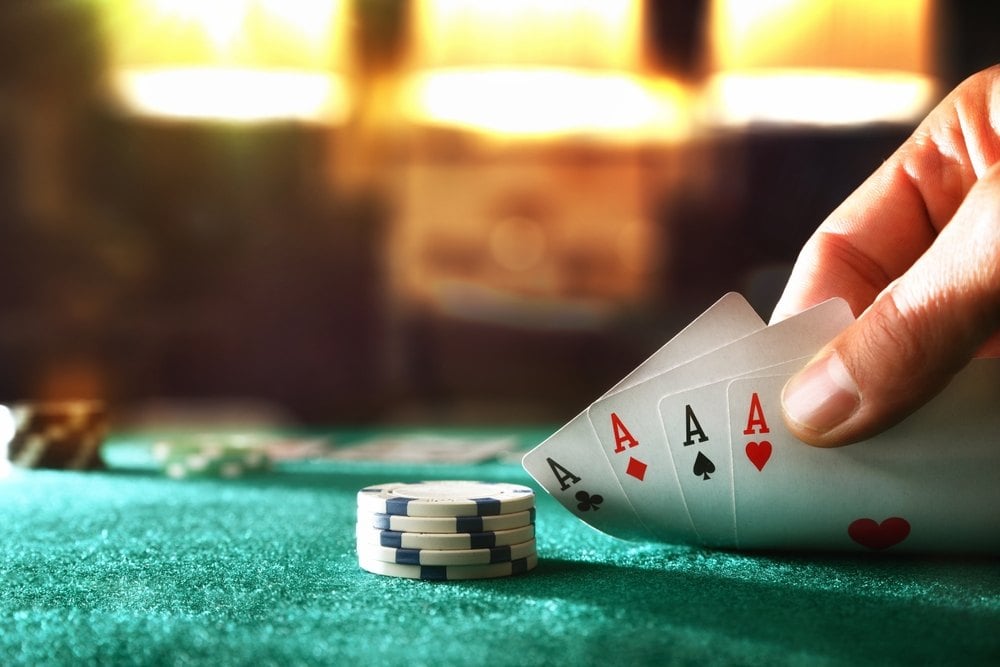
Image Credit: AS Inc/Shutterstock
2. Setting Your Intention
This is about choosing how you want to show up for the session.
Ask yourself:
- What kind of player do I want to be today?
- What mindset will help me make good decisions?
- What does playing my A-game look like?
Then turn it into a short, values-based phrase like:
- “I play with purpose, not fear.”
- “I stay composed under pressure.”
- “Smart decisions are wins.”
3. Mental Rehearsal
This is a powerful but underused tool in poker. Just like athletes visualize their performance before a game, you can mentally rehearse situations you want to handle well.
For example:
- Picture a common tough spot (like facing a river bluff shove).
- Visualize yourself breathing, staying grounded, and following your process, even if it’s uncomfortable.
This primes your brain to act in alignment with your best poker self when those moments actually arise.
4. Confidence Priming
Confidence doesn’t need to come from hype. A simple way to prime it? Recall a recent decision you’re proud of.
It could be a solid fold, a disciplined exit, or a tough spot where you stayed emotionally regulated. Bring that memory to mind, and connect to the identity of the player who made it.
This works because it reminds your brain, “I’ve done it before. I can do it again.”
You don’t need to use all four pieces every time, but when you combine even two or three, you’re entering the session with far more mental clarity than most of your competition.
Next, I’ll show you how to turn these pieces into real warm-up routines.
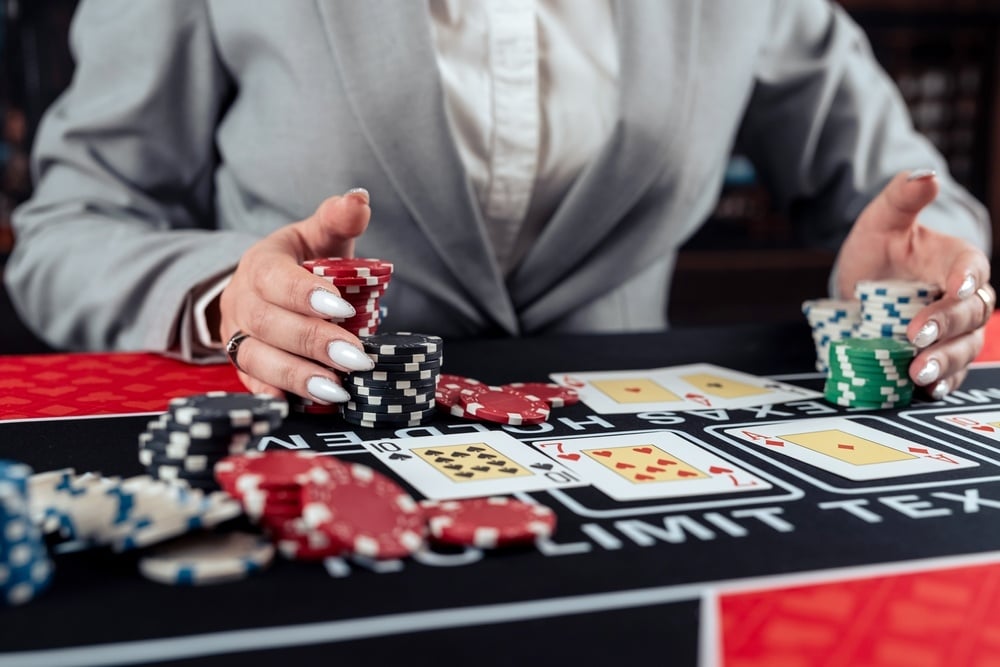
Image Credit: RomanR/Shutterstock
Example Poker Warm-Up Routines (Quick, Medium, Full)
One of the biggest reasons players skip doing a warm-up? They think it has to be long or complicated.
But just like in the gym, even a few targeted minutes can get your mind in the right state. Below are three warm-up options—ranging from a quick reset to a full pre-session ritual—so you can choose what fits your schedule and mindset needs.
🔹 The 2-Minute Reset (Quick Fix)
Perfect for when you’re short on time but want to feel grounded before jumping into a session.
What to do:
- One round of 6-2-7 breathing
- Set one session intention
(Example: “I stay focused and play my game.”) - Recall one recent small win you’re proud of
(A good fold, a disciplined quit, a solid bet-sizing decision)
Why it works:
This mini-routine centers your nervous system and activates your identity as a focused player, without needing to stop and “meditate.”
🔹 The 5-Minute (Everyday Standard)
Use this one before most sessions to build consistency and confidence.
What to do:
- Two rounds of 6-2-7 breathing
- Set 1–2 intentions that align with your values
(“I’ll respond, not react.” “I base my plays on logic, not emotion.”) - Brief mental rehearsal of one tough spot (e.g., facing pressure on the river)
- Short confidence mantra
(“Smart decisions are wins.” “I trust my training.”)
Why it works:
This hits all the major mental targets—focus, regulation, clarity, and confidence. Five minutes of this can be more valuable than twenty minutes of mindless pre-session browsing.
🔹 The Full Pre-Game Routine (Deep Prep)
Ideal for big sessions, live events, or when you’re coming off a break or rough stretch.
What to do:
- Full 5-minute breathing session using 6-2-7 or your preferred method
- Reflect on your poker goals and values
(Why are you playing? What are you working toward?) - Review one recent mistake and how you’ll handle it differently next time
- Visualize 2–3 key scenarios where you want to stay calm and execute
- Repeat a confidence-anchoring phrase
(“I’m here to make good decisions, no matter what happens.”)
Why it works:
This routine builds composure. It reinforces emotional resilience, identity, and strategic readiness, so you start a session with your full mental toolkit engaged.
Whether you use the 2-minute version or go deeper, the real win is making warm-ups part of your regular poker rhythm. The more consistent you are, the more automatic confidence and clarity you will feel.
Up next: a few common pitfalls to avoid so your warm-up doesn’t get derailed.
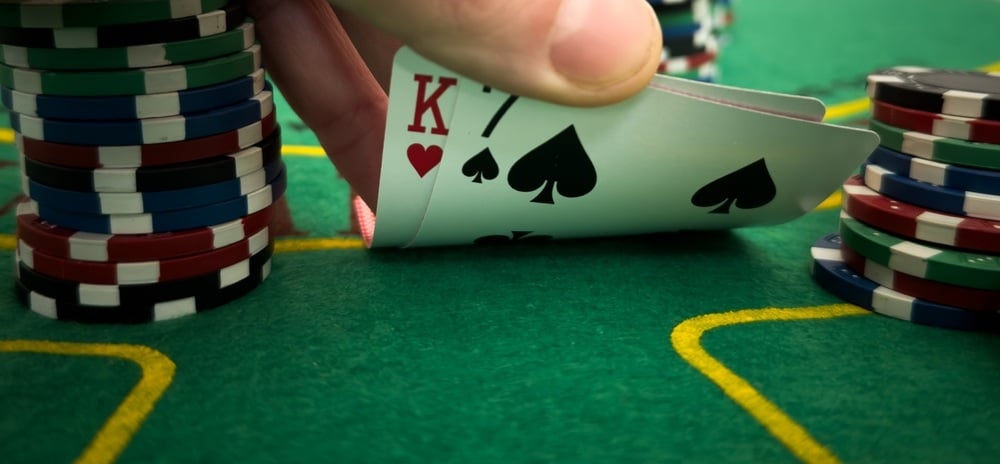
Image Credit: Andrew Angelov/Shutterstock
Make It Stick: Building the Warm-Up Habit
Creating a warm-up routine is one thing—sticking with it is where the real transformation happens.
Here’s how to make your mental prep a consistent part of your poker life (without relying on motivation or willpower):
Pair It With an Existing Habit
One of the easiest ways to build a new behavior is to anchor it to something you already do.
For example:
- Do your 6-2-7 breathing while your poker site is loading.
- Set your intention right after you open your tracking software.
- Visualize your spot while shuffling chips or walking into the cardroom.
These simple “stacking” cues make it easier to remember and harder to ignore.
Use a Visual Prompt
Out of sight, out of mind. A sticky note on your monitor, a reminder in your poker journal, or a pre-session checklist can help cue your brain: “Oh right, we do this now.”
Visual prompts turn the warm-up from an idea into a behavior.
Reflect After the Session
Reinforcement strengthens habits. After your session, ask:
- Did I follow my warm-up?
- Did I play in alignment with my intention?
- How did my mindset feel compared to when I skipped it?
This helps close the feedback loop, and it enables you to track how that prep impacts performance.
Make It Yours
Don’t force someone else’s routine to fit you. If music helps you center, use it. If breathwork isn’t your thing, try walking meditation or body scans.
The key is consistency and usefulness. Your warm-up should feel like a mental “tuning fork”—something that aligns you before the first hand is dealt.
Remember, mental preparation isn’t about perfection. It’s about showing up deliberately. And the more often you do that, the more your brain learns: “This is who I am. This is how I play.”
Final Thoughts: Win the Session Before the First Hand is Dealt
Your mindset is part of your edge. And just like your technical game, it’s something you can train.
A mental warm-up routine isn’t just a “nice to have”. It’s a proven way to sharpen focus, calm your nerves, and anchor yourself in the version of you that makes strong, thoughtful decisions.
You don’t need to spend 30 minutes journaling or meditating. Even a quick reset using a few intentional breaths and a clear intention can shift you from scattered to centered.
The best players don’t wait until they feel off to do mindset work. They build rituals that keep their head in the game before the cards are even dealt.
So here’s your challenge:
Before your next session—whether online or live—try one of the warm-up routines from this article. Just pick a version that fits your day and do it.
You’ll be surprised how much more in control, focused, and confident you feel—right from the very first hand.
Title Image Credit: Dmitry Morgan/Shutterstock
